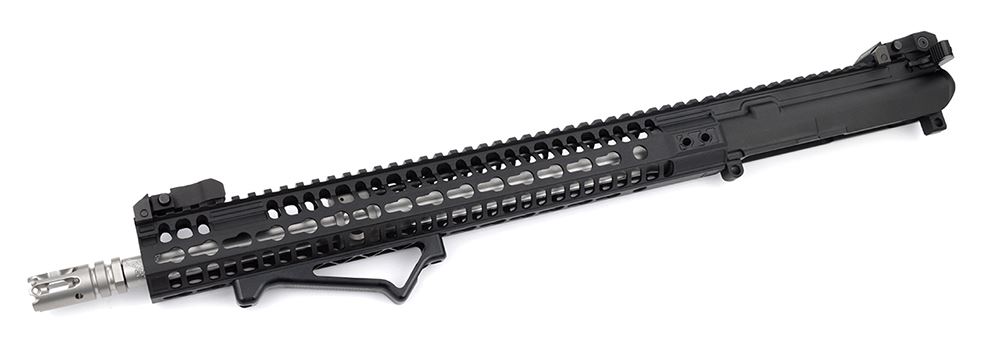Updated November 27, 2020
An increasing number of hunters are choosing the AR-15 as their preferred rifle for taking down animals such as hogs, deer and coyotes. The AR-15 offers the important benefit of flexibility — you can easily customize your rifle by swapping out parts and adding accessories. The fact that the AR-15 is primarily made from aluminum and polymer means it is also tough enough to handle outdoor environments and won’t rust as quickly as steel weapons. In this post, we will discuss the basic AR-15 setup for hunting, as well as how to alter it for the animal you are targeting.

AR-15 Setup for Hunting: The Basics
In general, an AR-15 will have the following parts, each with certain options that lend themselves best to hunting:
- Upper receiver: Upper receivers are available in a stripped or barreled format. A stripped upper is basically a shell to which you add a barrel, bolt, bolt carrier and forend. A barreled upper comes already assembled with these parts and is ready to attach to the lower receiver. The stripped version gives you more freedom for building a dedicated hunting upper.
- Lower receiver: The lower receiver serves as the foundation of the weapon. As with the upper receiver, you can purchase a stripped or fully assembled lower, with the stripped version allowing for greater customization.
- Barrel: The most common AR-15 barrel lengths are 16”, 18” and 20”. The 20” barrel is typically the best choice for hunting larger animals, as they provide greater velocity and accuracy. A disadvantage is that it is slightly heavier to carry. On the other hand, short-range hunting of smaller game may be better suited for a shorter barrel.
- Handguard: Handguards cover the barrel in the area where you place your off hand when firing. Handguards come in non-free-floating and free-floating versions — the former is connected to the barrel, while the latter does not come in contact with the barrel at all. The free-floating handguard is the better option for long-range hunting, as it provides greater accuracy.
AR-15 Setup for Hog Hunting
Many hunters have a lot of success hunting hogs with a standard AR-15 setup, while others like to experiment with multiple configurations. There are also plenty of AR-15-compatible calibers that will effectively kill hogs, including the 6.8 Grendel, 6.8 Remington SPC, .450 Bushmaster and .50 Beowulf. If you enjoy hunting hogs at night, your AR-15 should include a handguard that allows for easy mounting of lights.
AR-15 Setup for Hunting Deer
Perhaps the biggest decision to make with an AR-15 setup for hunting deer is determining which caliber to use. Many hunters feel that the .223 is too small to do the job and prefer the 6.8 Remington or 6.8 Remington SPC — especially the latter because of its versatility — when hunting whitetail deer.
AR-15 Setup for Hunting Coyote
In contrast to the AR-15 setup for hunting other animals, you can probably get by with a shorter barrel (16” or 18”) when hunting coyote, as you will not need the extra velocity. A .223 caliber is also sufficient for bringing down a coyote.
If you want to set up your AR-15 for hunting, check out the wide selection of parts available from Wing Tactical!
View Our Selection of AR-15 Parts >>
